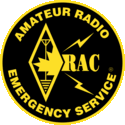
Winnipeg Amateur Radio Emergency Service
... Providing voluntary communications in times of need

About Winnipeg ARES
CANWARN
News
Meetings
Upcoming Events
Resources
Links
Archives
Emergweb
Manitoba Weather
MEMO
Contact Us
CANWARN...
(CANadian Weather Amateur Radio Network) is a joint project of Environment Canada
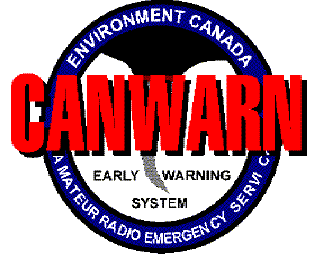 and local Amateur Radio Groups, in which Amateur Radio Operators, trained in the recognition of severe weather elements,
pass reports of sightings of such phenomena directly to their local Weather Offices via VHF and UHF Amateur Radio.
and local Amateur Radio Groups, in which Amateur Radio Operators, trained in the recognition of severe weather elements,
pass reports of sightings of such phenomena directly to their local Weather Offices via VHF and UHF Amateur Radio.
The "ground truthing" provided during these severe weather "Nets" allows Environment Canada to detect and disseminate warnings to the Public about severe weather events which might normally go unnoticed by normal forecasting and detection techniques. CANWARN is somewhat similar to the Skywarn project which is in wide use within the United States.
Background
Windsor Amateur Radio Club began a program in MARCH 1987 under a group led by Randy Mawson, now VE3TRW, to supplement the Environment Canada Severe Weather Watch Program with Amateur Radio Operators trained in severe weather observation.
CANWARN became operational in southern Manitoba on 01 July 1998. It started the following spring in Alberta and Saskatchewan. It was previously known as Altawatch in Alberta.
Outline
Once a CANWARN Severe Weather Net is activated, Forecasters at the Prairie Storm Prediction Centre
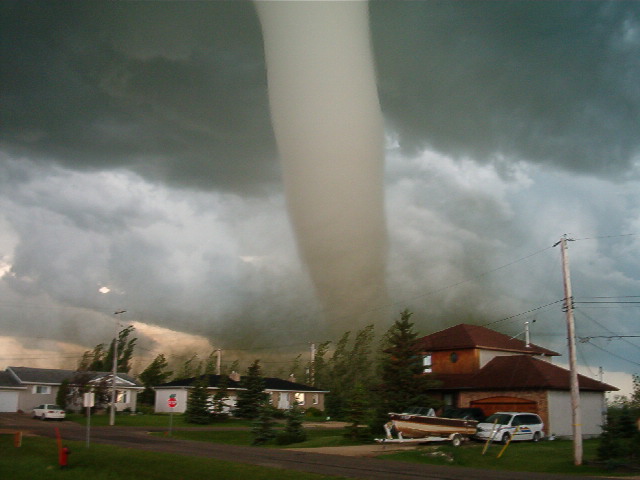
The June 2007 Elie Tornado
will initiate the call-out for CANWARN participants in a particular area to provide reports back to Winnipeg through various repeater
systems. Winnipeg ARES, in conjunction with Environment Canada, has established VE4WWO as a VHF/HF station at the Environment Canada
Offices located at 123 Main Street in Winnipeg.
According to the CANWARN Manual of Standards, during a CANWARN Net no other traffic is allowed on the repeaters in use except during a
CONDITION GREEN.
Participation
Amateur groups or clubs that can communicate via 2 metres to the Winnipeg Weather Office can participate in the Manitoba program.
Amateur operators MUST attend a CANWARN Spotter Training session.
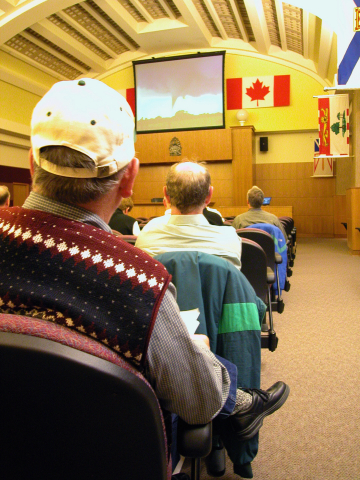
A Training Session
Spotter training sessions have been carried out in Beasejour, East Selkirk, Selkirk, Teulon, Portage la Prairie, Dauphin,
Neepawa, Brandon, Morris and Winnipeg.
Activation (Manitoba)
A CANWARN Net can be activated by one of three people:
1) The Environment Canada Severe Weather Forecaster,
2) The on-duty CANWARN Net Controller, or
3) The CANWARN District Representative.
Once the net has been activated, the Net Controller will notify, by radio or telephone, local members and rural ARES Emergency Coordinatorss
to start local call-out of Rural ARES units.
 CANWARN trained operators observed and reported the 2007 tornado in Elie.
CANWARN trained operators observed and reported the 2007 tornado in Elie. One Net in 2010 ran approximately nine hours.
One Net in 2010 ran approximately nine hours.
Here is a break down of CANWARN Net activations for the last ten years:
| Year | # Nets |
| 2006 | 18 |
| 2007 | 15 |
| 2008 | 8 |
| 2009 | 7 |
| 2010 | 11 |
| 2011 | 6 |
| 2012 | 8 |
| 2013 | 12 |
| 2014 | 4 |
| 2015 | 11 |
| 2016 | 6 |
Loss of Communications
CANWARN participants in the affected area with an observation to report are to telephone the Severe Weather Watcher Line if a loss of communications occurs during a CANWARN Net.
Non CANWARN MEMBERS are also invited to call 1-800-239-0484 to report severe weather such as heavy rain, winds 90Km/h or greater, hail or any tornadic events or funnel clouds.
Each Manitoba unit has a primary and secondary VHF repeater identified. The HF backup frequencies for Manitoba CANWARN units are 80m - 3.760 MHz LSB and 40m -7.070 MHz LSB.
Net Controllers
Net Controllers for the Manitoba program
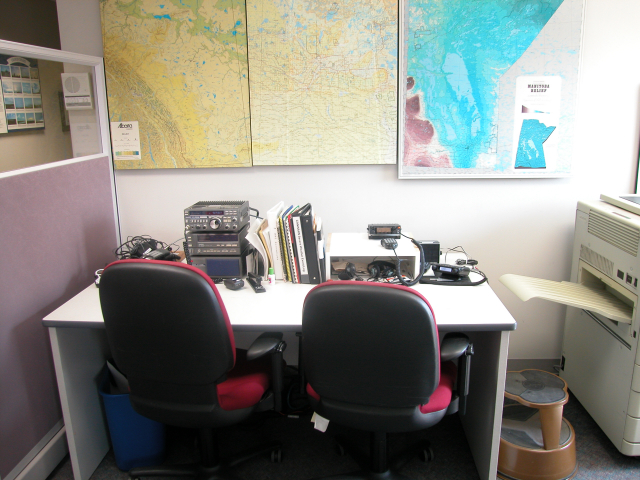
Station VE4WWO
will normally be ARES members who have taken Spotter Training and attended CANWARN Net Controller Seminars.
Resources
 Manitoba
ARES CANWARN Spotters
Information - 2023
Manitoba
ARES CANWARN Spotters
Information - 2023 Reportable Summer Weather
Reportable Summer Weather Reportable Winter Weather
Reportable Winter Weather NOAA Spotter Reference Guide
NOAA Spotter Reference Guide NOAA Basic Spotters' Field Guide
NOAA Basic Spotters' Field Guide NOAA Advanced Spotters' Field Guide
NOAA Advanced Spotters' Field Guide Environment & Climate Change Canada Cloud Chart - Poster
Environment & Climate Change Canada Cloud Chart - Poster Environment & Climate Change Canada Cloud Chart - Booklet
Environment & Climate Change Canada Cloud Chart - Booklet CoCoRaHS
CoCoRaHS